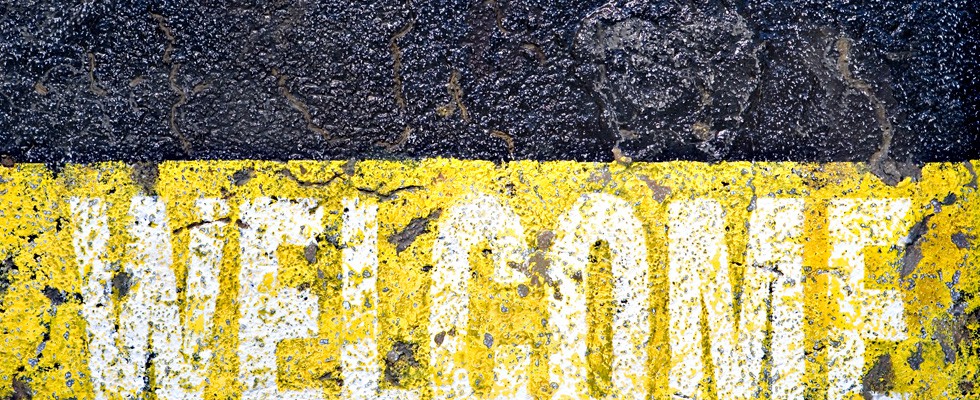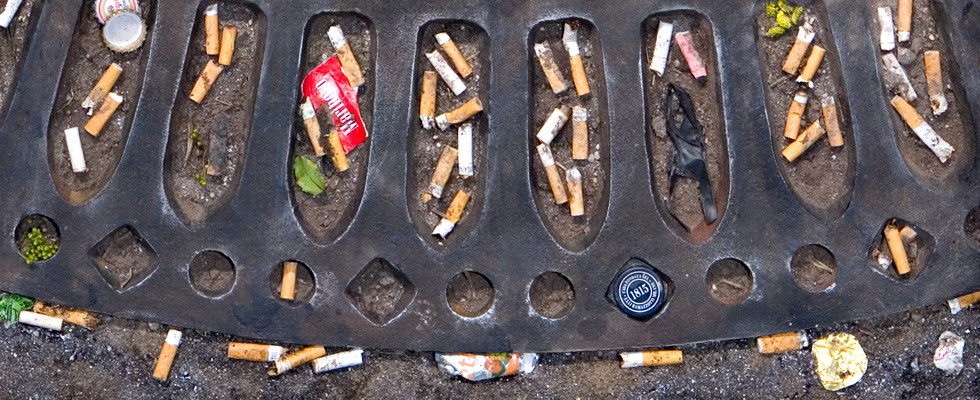STREET PAINTING
Michael Scheirl makes thematic use of asphalt combined with the signs and markings of traffic and street life in his extraordinary work – as “street paintings“ or “asphalt images“ of a very special kind. fine instinct enables him to capture everyday perception with documentary precision. he transforms findings and discovery sites from all over the world into accurate reconstructions in large picture format on genuine asphalt. at the same time he emphasizes the dromological tension connecting the anonymous flow of traffic, the abrasion of the asphalt covering and the application of local signs and signals.
Scheirl spins the asphalt path to the vertical, imposing it on his work. this industrially prepared surface – which, so to say, guarantees automobility – thereby becomes a piece of work and a material symbol of art. pressed styrofoam boards, up to three by four meters in size, are then encased and shaped with synthetic material before being coated with a layer of asphalt. photographs and sketches provide the images of everyday life – such as skid marks, dirt, cracks – which are then painstakingly reconstructed. the focus is on the layer of asphalt which appears as porous as its photographic image. On a scale of one to one the signs and markings of traffic and street scenes are applied. solid or broken lines restricting or allowing movement and lane changes. National and international symbols, older and newer variants, bold and faded symbols, in relevant entirety or intentional compositional fragments.
Michael Scheirl revels in fade-ins and suspense: at once with the difference of everyday experience and artistic view, then with the friction between material dislocated and removed from its context, and that of the signal fixed in its significance, with the dialectic between the locationless site of traffic, as such, stationary only in art and the traces of its constant transit, of the designation of intentional and unconscious movements, the vivid liveliness and the staged erosion of the subject matter. in this way, there is a reflective pictorial statement that is more than a literal rendering of a bit of reality: the site is marked as a passage in which the time of traffic influx and its traces are noted as a historically consolidated course of events.
Painting takes its direction by means of presentation and then by the technique of exact reconstruction. For Scheirl the terms “Straßenmalerei“ or “streetpainting“ hold new meaning. With regard to his technique this means the precise remake of the street as a visual and tactile object of installative art.
Michael Scheirl reconstructs asphalt as the subject of his work and as a tangible venue of authentic utilization. art renders this transitory place, the street, and the consumable material, asphalt, a place and time that is predictable on both a mathematical and on a docmentary level within a lane or track, despite the original purpose and function of passing through a given space and overcoming any kind of commitment to a place, along with the radical side effects of material utilization of ground and energy. the artist reflects this by reproducing, as realistically as possible, the color effects from signs on traffic environments and, moreover, the evidence of wear and tear on asphalt. in this way he creates authentic street models for close-ups of the ashalt jungle. it becomes distinct in its function as a surface cover, as the springy exterior, and as a readily usable and removable layer between the street and the subconstruction under the weight of the wheels and tires. asphalt becomes an odd kind of non-space, a temporary lubricant, a kind of oil film familiar to us from the shimmering heat of summer or as a freshly poured layer from the tar machine.
This evidence of traffic underlies the concept of these works in a proprietory manner. it denies asphalt of its practical meaning and the signs of their everyday function. to begin with, the asphalt image provides an outlet for aesthetically taking itself out of its own context. the signs and backgrounds, which have been reconstructed from photographs, are released from the realistic monotony of everyday life on the street. however, by removing the signs and asphalt from the realism of daily life and having them appear as well-formed material objects on the wall, everyday life remains well-kept and strangely preserved in a visual and tactile manner. the deceiving, eventful and dangerous twilight state of the busy street, the semi-conscious awareness of the traffic, and its silent and yet, at the same time, screaming vitality, the relativity of its signs and controlling mechanisms, the insight into the unrelenting pressures of time and space – the pressure of mobility and the realization that the traffic itself mercilously unravels and crushes its own time, space and material reality – all this becomes the object of minute inventory. the utterly blind view of anonymous traffic receives surprisingly sensitive enlightenment from the contrary artistic vision which most carefully examines and preserves all material traces.
Peter v. Brinkemper




